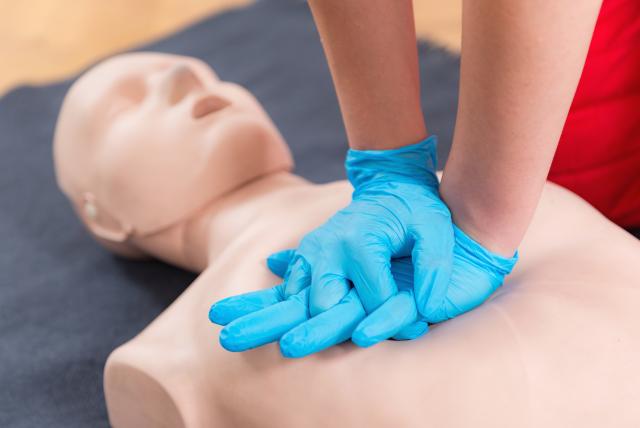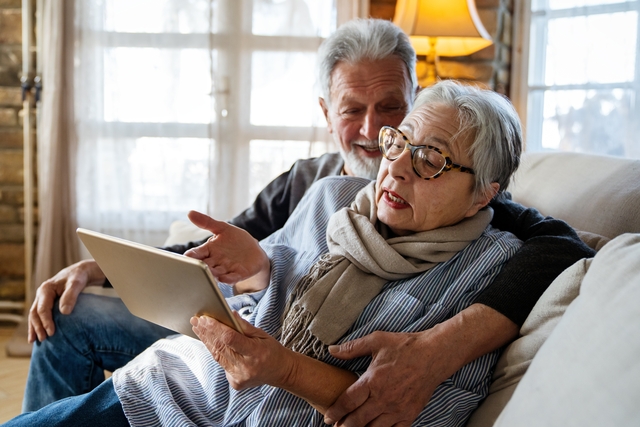Victorian bystanders are stepping up to help save lives as cardiac arrest emergency cases reach record highs, according to new research by Ambulance Victoria (AV).
The latest Victorian Ambulance Cardiac Arrest Registry (VACAR) Annual Report reveals paramedics responded to 7,361 cardiac arrests in 2021/22 – a rise of 5.8 per cent.
When cardiac arrests were witnessed by members of the public, 79 per cent of people were willing to step up and commence life-saving cardiopulmonary resuscitation (CPR) – up from 77 per cent a year earlier.
More bystanders are also using public automated external defibrillators (AEDs) which significantly improve survival rates. In 2021/22, 107 cardiac arrest patients received a shock from an AED before paramedics arrived, up from 82 the year prior.
“We know that minutes matter in a cardiac arrest and that if a person receives bystander CPR and defibrillation, their chance of survival more than doubles,” AV Director Research and Evaluation Dr Ziad Nehme said.
“We can proudly say that Victoria has best cardiac survival rates in Australia and one of the best in the world.”
Teenager Jasper Wickes is alive today thanks to the life-saving efforts of bystanders who immediately called Triple Zero (000) and started the chain of survival. In 2021/22, 360 Victorian patients like Jasper were discharged from hospital after suffering a cardiac arrest.
The 16-year-old was playing basketball on 8 January when he collapsed in front of his team.
The Emergency Services Telecommunications Authority’s (ESTA) Triple Zero call-taker calmly guided Jasper’s coach of four years, Hayden Jardine, who started mouth to mouth. GoodSAM Responder Jess Purcell was notified of the emergency and came running from a nearby dance studio and began chest compressions.
Jess, who had only registered for GoodSAM just days before Jasper’s cardiac arrest, drew on years of CPR training as a scout.
Mobile Intensive Care Ambulance (MICA) paramedics Kate Dalrymple, MICA student Chloe Abel and Advanced Life Support paramedics Anna Janssen, James Munro and Matt Teofilo arrived within seven minutes. Jasper’s heart was successfully restarted and the crew took him to Monash Medical Centre in Clayton.
His incredible recovery saw him discharged from hospital on 23 January and back at school to start his VCE.
“I feel very supported knowing that so many people stepped in to help me,” Jasper said.
“I’m very thankful for what everyone did. They’re heroic.”
Coach Hayden said it had been a chaotic scene, with Jasper’s teammates watching their tallest player fight for his life.
“He was lying there with his eyes wide open, completely unresponsive. It’s not something you’d expect from an active teenager,” Hayden said.
Ziad said Jasper’s survival showed how GoodSAM Responders can make a real difference.
“With more Victorians suffering cardiac arrests than ever before, AV’s GoodSAM Responder program has never been more vital,” Ziad said.
“GoodSAM is a life-saving smartphone app that connects Victorians in cardiac arrest with volunteers who are willing to start CPR and use an AED in the first critical minutes while paramedics are on the way.
“We have thousands of GoodSAM volunteers willing to help us save lives across the state and I urge more people to sign up.”
There are three simple steps to save someone’s life: Call (Call Triple 000), Push (Perform CPR) and Shock (use an AED).
The VACAR annual report has been monitoring and improving the treatment and care of out-of-hospital-cardiac arrest patients for over two decades.
Ziad said the Resuscitation Quality Snapshot was an exciting and innovative addition to this year’s report.
“This is first time any ambulance service in the world has delved this deep into the quality of resuscitation provided by paramedics,” Ziad said.
“It shows our highly skilled paramedics provided excellent resuscitation, including recognising cardiac arrests early, performing high-quality CPR, delivering early defibrillation and additional advanced care.
“AV is a research-focused organisation, and we use evidence-based insights such as these reports to drive innovation and continually improve outcomes and best care for our patients.”
Despite record ambulance demand, the average emergency response time to a cardiac arrest was 8.2 minutes, with most patients defibrillated in just over 10 minutes.
Patients who received bystander CPR had a higher survival rate (11 per cent) compared with those with no bystander CPR (5 per cent).
The report shows 79 per cent of patients suffered cardiac arrests at home. The median age of cardiac arrest patients was 70 years, with 74 years the average age for women and 67 years for men. Men made up 65 per cent of patients.
The VACAR report is available via https://www.ambulance.vic.gov.au/about-us/research/research-publications/.







